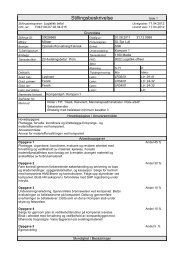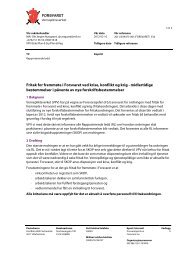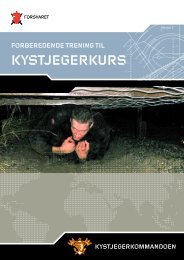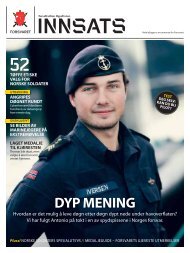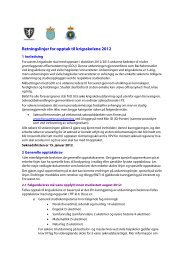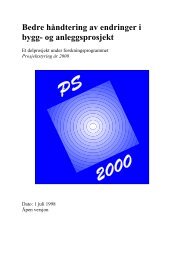Litteraturstudie - Tidligfasevurdering av prosjekter - Concept - NTNU
Litteraturstudie - Tidligfasevurdering av prosjekter - Concept - NTNU
Litteraturstudie - Tidligfasevurdering av prosjekter - Concept - NTNU
You also want an ePaper? Increase the reach of your titles
YUMPU automatically turns print PDFs into web optimized ePapers that Google loves.
CONCEPTFront-end Management of Major ProjectsSikring <strong>av</strong> store investerings<strong>prosjekter</strong>Risk management is one of the key project management processes. Numerous toolsare <strong>av</strong>ailable to support the various phases of the risk management process. Thispaper present the results of a study designed to identify the tools that are most widelyused and those that are associated with successful project management in general, andwith etfective project risk management in particular. The study is based on aquestionnaire adrninistered to a sample of project managers from the software andhigh-tech industries. The response data was analyzed in order to tind which tools aremore likely to be used in those organizations that report better project managementperformance and in those that value the contribution of risk management processes.Remer, D. S., Nieto, A., P A compendium and comparison of 25 project evaluationtechniques, Harvey Mudd College of Engineering and Science, Claremont, USA,International Journal of production economics.This two-part paper presents 25 different methods and techniques used to evaluate theeconomic desirability of projects. We categorized these 25 methods into 5 types: netpresent value methods, rate of return methods, ratio methods, payback methods, andaccounting methods. We provide insight in to the advantages and limitations of theseproject evaluation methods by comparing and contrasting them. Many examples areincluded to illustrate the use of these methods. In Part I. we exammine net presentvalue and rate of return methods. In Part 2, we exammine ratio, payback, andaccounting methods. A recap, comparison. and full summary of all 25 methods isincluded at the end of Part 2.Rodrigues, Alexandre G., Managing and Modelling Project Risk Dynamics - A SystemDynamics-based Framework, Department of Information Systems, The School ofEngineering, University of Minho, Gampus de Azurem, Portugal, Project ManagementSeminars and Symposium, PMI 1999.The fast changing environment and the complexity of projects has increased riskexposure. The PMBOK proposes a structured risk management process, integratedwithin the overall project management frarnework. However, unresolved difficultiescall for further developments in the field. In projects, risks take place within acomplex web of numerous interconnected causes and effects, which generate ciosedchains of feedback. Project risk dynamics are difficult to understand and control, andnot all types of tools and techniques are appropriate to address their systernic nature.System Dynarnics (SD), as a proven approach to project management, provides thisalternative view. A methodology to integrate the use of SD within the establishedproject management process has been proposed by the author. In this paper, this isfurther extended to integrate the use of SD modelling within the PMBOK riskmanagement process, providing a useful frarnework for rnanaging project riskdynarnics.Saleh, Mohammed, Myrtveit, Magne, Designing a rational process for risk-taking, PowersimAS, ISDC Wellington, Norge 1999.In this paper the authores attemt to invent a new way to understand risk, measure it,and weigh its consequenses. They attempt to design a rational process for risk-taking;a process that gives the system dynamicist the ability to define what may happen inthe future and then choose among alternatives.Litteraturstudium innen tidligfasevurderinger <strong>av</strong> <strong>prosjekter</strong> 67









